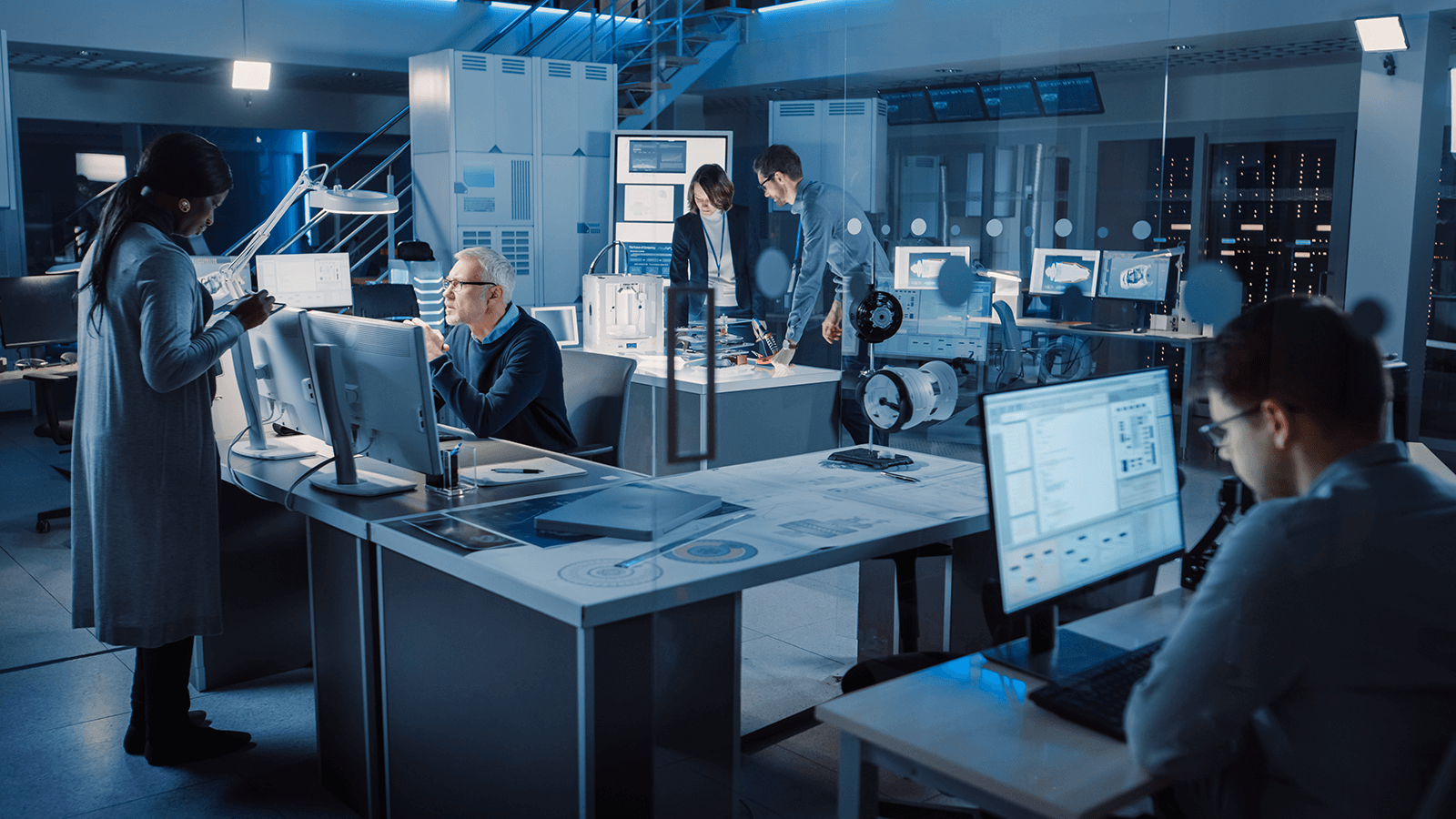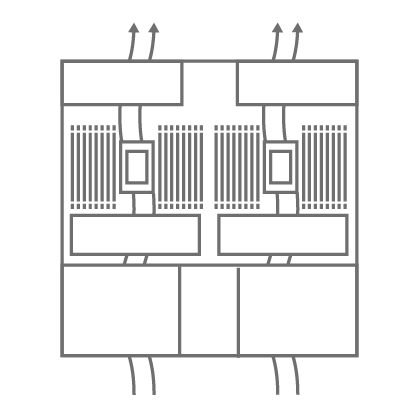
Individual Solutions for Efficient Cooling Concepts
Since every server room, every infrastructure and every environment is different, there is no off-the-shelf solution in this question either. When planning server or HPC systems, we draw on a diverse range of cabinet systems and cooling solutions from leading suppliers.
Whether the rack has a water-cooled rear cooling door, a cabinet side cooler, Direct Contact Liquid Cooling (DCLC) CPU/GPU cooling concept or even the entire system has a customized enclosure: Depending on your situation or task, we select the right solution from the portfolio of our technology partners Rittal, Knürr, Cool IT Systems and other enterprise manufacturers.
Whether the rack has a water-cooled rear cooling door, a cabinet side cooler, Direct Contact Liquid Cooling (DCLC) CPU/GPU cooling concept or even the entire system has a customized enclosure: Depending on your situation or task, we select the right solution from the portfolio of our technology partners Rittal, Knürr, Cool IT Systems and other enterprise manufacturers.
This is why Choosing the Right Cooling System is Important
The first criterion for deciding on the right rack is the environment. Usually, server racks have a low density, which means that the components in the rack are not protected from dirt or moisture for a long time. So if the server rack is located in a damp and possibly dirty room, it needs a special variant with a high density. Another important issue is the temperature - both that which influences from the outside and that which arises from the operation of the components. A temperature in the cabinet that is compatible with the equipment is 25 to 30° C. However, the temperature in the cabinet is not uniform. At certain points, such as slightly above the server, it usually gets particularly hot. To think about the right cooling system, these so-called hotspots must be known.


This is why Choosing the Right Cooling System is Important
The first criterion for deciding on the right rack is the environment. Usually, server racks have a low density, which means that the components in the rack are not protected from dirt or moisture for a long time. So if the server rack is located in a damp and possibly dirty room, it needs a special variant with a high density. Another important issue is the temperature - both that which influences from the outside and that which arises from the operation of the components. A temperature in the cabinet that is compatible with the equipment is 25 to 30° C. However, the temperature in the cabinet is not uniform. At certain points, such as slightly above the server, it usually gets particularly hot. To think about the right cooling system, these so-called hotspots must be known.
Different Cooling Systems Possible
The simplest option is to install a roof or floor vent. The roof ventilator draws in the cold air from the outside, guides it through the cabinet and the now warm air out again via the roof. In the case of cabinets with high tightness and the use of fans, care must also be taken to ensure that the filter fans and outlet filters used also have high tightness. In addition, the air drawn in must be constantly cooler than that in the cabinet - which is not the case everywhere in summer.
In this case, classic cabinet air conditioner can be installed. These function similarly to a refrigerator and cool racks up to an outside temperature of up to 55° C. Here, too, attention must be paid to the tightness: If it is too low, condensation will form if the difference between the outside and inside temperatures is too great. This damages the installed equipment.
In this case, classic cabinet air conditioner can be installed. These function similarly to a refrigerator and cool racks up to an outside temperature of up to 55° C. Here, too, attention must be paid to the tightness: If it is too low, condensation will form if the difference between the outside and inside temperatures is too great. This damages the installed equipment.
Air/water heat exchangers are the most effective type of cooling. Here, the heat is dissipated directly where it is generated and there is an evenly distributed air flow in the rack. If rows of racks are set up, cooling can be provided effectively and efficiently by intelligent cold aisle cooling (keyword “data center cooling”).
The DCLC cooling concept is a particularly innovative rack cooling solution for environments in which large chillers cannot be used, e.g. for structural and/or investment reasons. Here, the particularly heat-producing components CPU, RAM and now also GPU enterprise cards are cooled directly and highly efficiently. The Direct Liquid Cooling method of our partner Cool IT systems is currently unparalleled on the market.
The DCLC cooling concept is a particularly innovative rack cooling solution for environments in which large chillers cannot be used, e.g. for structural and/or investment reasons. Here, the particularly heat-producing components CPU, RAM and now also GPU enterprise cards are cooled directly and highly efficiently. The Direct Liquid Cooling method of our partner Cool IT systems is currently unparalleled on the market.

